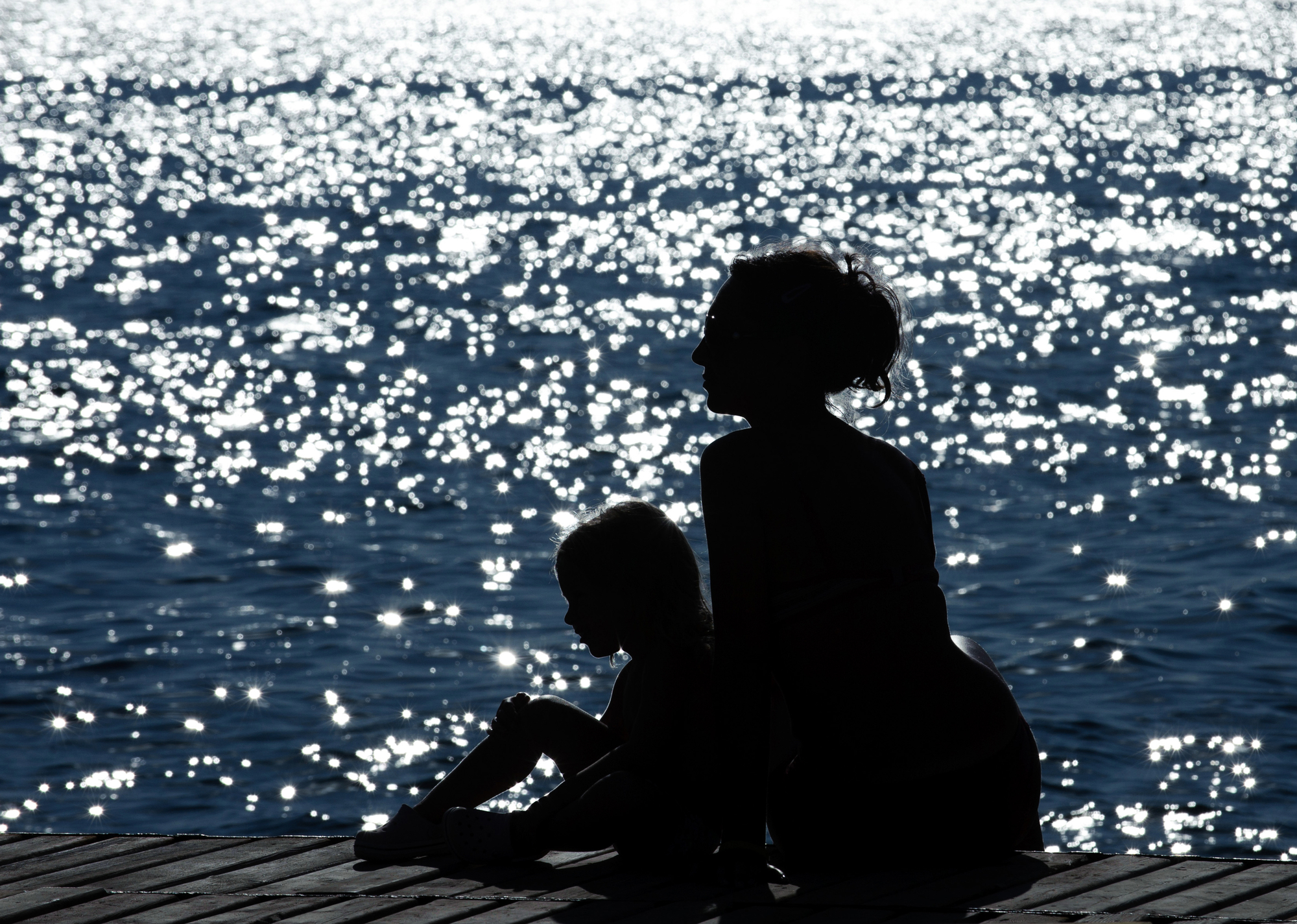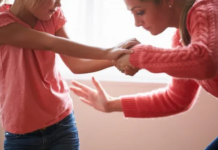Giving Caregivers a Platform: Chandra, Mother of Sophia
An Interview Series with Parents and Other Family Members
This is the story of Chandra and her daughter Sophia (not their real names), who has been in the mental health system since the age of 10. Early on in Sophia’s life there were highly sensitive behaviors exacerbated by classroom noise, teachers who raised their voices, and emotional trauma from witnessing a peer’s untimely death. These experiences enhanced Sophia’s personality traits into painful stomach aches and debilitating anxiety that prevented her from regular school attendance at the young age of 6.
 Chandra has been navigating the medical system to help her daughter get to the bottom of her challenges so she may lead a happy and healthy life. Unfortunately, Sophia’s distress and diagnoses unfolded over many years, involving self-harm, anxiety, phobias, and chronic physical pain that created real internal inflammatory challenges and left doctors stumped. Treatments of Prozac and other medications became band-aids. Only much later was the possibility of her being on the spectrum considered, as it was not on psychiatrists’ radar for young girls.
Chandra has been navigating the medical system to help her daughter get to the bottom of her challenges so she may lead a happy and healthy life. Unfortunately, Sophia’s distress and diagnoses unfolded over many years, involving self-harm, anxiety, phobias, and chronic physical pain that created real internal inflammatory challenges and left doctors stumped. Treatments of Prozac and other medications became band-aids. Only much later was the possibility of her being on the spectrum considered, as it was not on psychiatrists’ radar for young girls.
Like many mothers, Chandra continues to learn about the intricacies of Sophia’s multiple diagnoses—and their impact on her—and reflects on where the medical system and its partnership with parents and children fall short. Chandra honors her now young-adult daughter’s boundaries for independence while doing her own work to assist whenever she is open to receive love and care.
What is your child’s name and age? Tell me a little about her story and yours.
My daughter, Sofia, age 35, lives in the Pacific Northwest and has had a long road to multiple diagnoses, support, and treatment, which continues today.
By the age of 8 she was in therapy for her social anxiety and then prescribed at age 10. At the end of 3rd grade she witnessed a classmate being crushed by his garage door. Her grief counselor kept his spirit alive by naming her plant and pets by his name.
Many days of school were missed at the age of 6. She expressed chronic pain from headaches, stomach aches, and fatigue. The pediatrician prescribed Advil and Pepto Bismol, because what else do you do at that age? I wanted answers for my child, who was relentlessly suffering, and soon I became this mother taking my child to a psychiatrist. I had awareness of the somewhat new [DSM-IV] and the positive and negative connotations. I feared her integration into the medical model and the prescribing of medications at such an early age, [but] I had to help my daughter from her continuous pain.
The label of “child” to “sick child” did not help her anxiety and only exacerbated it as she moved through elementary school. Sophia’s phobias and extreme reactions—from loud noises to seeing spiders and bees—caused us to leave activities on short notice. Unfortunately, her pain isolated her as well, as our family was at a loss at how to truly help her.
Socially, it became quite difficult for her, and her school didn’t seem to be a fit. Together with the doctor, her father and I decided to put her on a very low dose of Prozac for about three years. It provided stability, and she began to do better in school and social situations.
We moved to California when she was 13. She went through a whirlwind of medications for the next three years. While she was doing well on Prozac, her father didn’t want her on it anymore due to the alarming newly reported side effects on suicidal tendencies. Talk therapy helped her through her anxiety issues, and Buspar was prescribed.
Sophia’s characteristics of suicidal ideation and cutting/self-injury persisted, and while at the time the traits exhibited like bipolar disorder, [doctors] were cautious of that diagnosis, as it was reserved for older children. Plus, that diagnosis was known not for doing well with SSRIs, so Wellbutrin was prescribed along with Buspar.
While my challenging relationship with her father resulted in divorce and we became co-parents, he stayed on the east coast while Sophia, her sister, and I stayed west. The divorce [was] compounded by her questioning her gender identity at a young age, which would cause anxiety for anyone.
However, as time marched on there were traits that were not understood—from cutting on her arms and legs, and days she would not leave her dark room. She suffered pains in her legs, which were attributed to “growing pains,” which seem to have been another signal of what was to follow in more recent years. While Sophia had some great success at a new private school, her subsequent return to public education for an IEP (Individualized Education Plan), her hospitalizations and potential for residential treatment caused prolonged turmoil.
Still not diagnosed with autism, her crowning incident occurred at school—where there were no walls between classrooms, so the noise of clanging and high-pitched noises traveled between classes, [and she was also] able to see all the chaos in other rooms. Hearing one particular teacher who often yelled impacted other classrooms, and especially Sophia. At one point, this teacher yelled at Sophia for not having a particular organization of her classroom utensils and slammed her tray on the floor to make her put it back together again. Again, another failure in the system, where teachers were clearly not aware of sensitivities.
As Sophia has grown into a young adult, her symptoms are exacerbated: with elevated inflammatory markers; with multiple rotating pain conditions, from her jaw to gastrointestinal; to a (confirmed) connective tissue disorder called Ehlers-Danlos Syndrome. She has grown to be her own best advocate and is always researching to find answers in how to help herself. My daughter believes that she was placed on these psych meds—which certainly helped her anxiety, but never helped her chronic pain—because psychiatrists only saw her symptoms as psychosomatic and didn’t consider that there was something physical going on to address. The underlying physical issues causing her pain were overlooked and misattributed to being psychosomatic.
I’m grateful that she earned her advanced degree with an MFA, and has been open in her journey, expressed in her thesis, of her mental health journey through her second hospitalization. Around age 30 she moved with her boyfriend to the Pacific Northwest. They wanted to be “adults,” and this has many ups and downs, often not going very well.
As she approaches mid-life, sadly she sees her life as being very limited, most recently due to fear of exposure to Covid and her pursuit of better treatment to enhance her life. [She was] evaluated as being on the autistic spectrum at age 34. That in of itself is a whole new journey to uncover and seek understanding, and it does provide some answers to the historical path. 
Working at conventional jobs was always problematic, and Sophia has never worked full time. She has pieced it together and at times did well on editing jobs. After much effort to pitch her book for publication, she ended up being more successful writing articles for newspapers and magazines and establishing her own press, self-published a book of her poetry, and curated other poetry chapbooks, all of which earned her some income.
What do you feel about Sophia now, looking back as her parent?
There are multiple observations I have made as Sophia’s mom now, looking back. From a research perspective, I see that the DSM helps as a starting point, but it truly does not cover the multifactorial issues that occur with individuals. When someone is labeled, it places them in this funnel where there are specific treatments and directions that can be detrimental. Being treated for the symptoms, feeling better, getting attention did mitigate depressive tendencies—however, various social situations and transitions continued to exacerbate new and puzzling behaviors and physical pain. If we had known this shows up on the spectrum, we would not have placed her in environments where this would appear.
Part of the failure of the system [for her was] the overlooking of autism, being on the spectrum, as part of her diagnosis—and potentially somatization disorder, where the perception of pain is magnified. At the time, the doctors were narrow in their observations of autism, and that label was reserved for boys.
Taking the time to slow down and ask what is really going on here never came into play. Here I was, a parent scared and seeing my child in pain day in and day out, and I looked to the experts to help. This was before all the information on the internet, so I had to really rely on the doctors’ expertise. We have so many more options [that we can learn about so much more easily] now, like DBT (Dialectical Behavior Therapy) and biofeedback.
Allowing it to be normal to feel anxious, validating that anxiousness, and observing her as a highly sensitive child would have formulated a very different path for Sophia.
What effect did that experience have on you?
As a strong advocate for my daughter’s care for so many years—e.g., through countless appointments attended, doing my own mental illness research, finding the right doctors, etc., as she’s grown into a young adult—it became apparent that I had to take a step back, as difficult as it has been. Because we don’t live in the same state and with the isolation due to the pandemic, it has been very challenging to help her with her many needs. Our relationship has been strained at times, and I have had to take her lead in how she desires my support. Sadly, her own anxiety and autistic characteristics have impacted her ability to navigate her own care as well.
There are times when I was not heard as a parent by the school district and the mental health providers, particularly in her school years. Thankfully [I] found people who would listen and hired an advocate who guided me through the IEP as a state right for every child in need.
I see that part of the failure of the system was the need for a targeted diagnosis rather than a cascade of multiple diagnoses and the overlook of her autistic traits. As she approaches mid-life, she sees her life as being very limited, most recently due to fear of exposure to Covid, and this makes me very sad. . . . Letting go of how I want things to be different has been a lifelong exploration for me that I suspect will continue.
My daughter has placed strong boundaries with me from time to time. These boundaries have prevented me from being in her life and helping her. While she has her specific reasons, it nonetheless is hurtful as she is my daughter and I only want the best for her. I have had to understand her communication style and character traits, which come with living as a person on the spectrum.
I have to maintain hope that she will find providers she trusts who will work with her complex medical and physical challenges, and that our relationship will continue to grow stronger with time.















Thanks, Chandra and Shelley for sharing. I appreciate it. I hope, Chandra, you can find a way to connect with your daughter.
Sam
Report comment
Thank you Sam.
Report comment
I think, without diagnosing nor advising that hyperacusis might explain some fears and hypersensitivity.
With the caveat that the audiological thereshold for diagnosis might be different in the audologist’s office than in the outside world, i.e. it could have at least false negatives.
The ear has mechanisms to adapt to loud noises when it is actually expecting one, and doing tests without expecting loud noises might be immoral.
And that predisposition to loud, particularly sudden noises, I imagine, since I have no particular useful knowledge, can present as “anxiety”.
But it could explain something, without recurring to the autism spectrum, since a genetic disease is stated as confirmed. And it could be related to the connective tissue, but I have no specific knowledge about that either.
In real clinical medicine it’s a rule of thumb that rare diagnoses rarely appear together unless they are related, beyond the symptoms and signs. The disease process, the physiopathology, has to connect them.
Aware that around 1 in 200 people have 2 rare genetic diseases, given 7% of the population have at least one, according to the WHO. But given the thousands of genetic, rare, orphan diseases, that comes to around 1 in 200 (the seven percent of the seven percent).
And this story reminds me that the life of teenagers, yound adults, middle aged, and even some not so young adults on average won’t be as great as most parents would have hoped. As parents on average had it.
Even members of those populations might have reasonably expected better outcomes for their lives. Unachieved by reasons beyond parents and “childs” control. Expectations missed in cases without explanation.
There is biography, but in most cases no causality: individual life is not subject to the scientific method.
Just lowering the average prosperity of the population, or worse, increasing the inequality of the distribution of said prosperity, just by chance and competition can send many “childs” into poverty, destitution, homelessnes, unemployment, addiction, incarceration and psychiatrization. Among other bad outcomes.
Just by chance, no other causality required.
And although to me casuistics can be enlightening, like statistics can be missued, or more commonly misinterpreted.
There are several cases of notable people with diseases that on first look do not appear to make a difference. There are others where it seems obliged. And there are cases where no disease is implied and good outcomes never materialized.
Such is life to me. Medicalization or psychiatrization may or may not explain. Regardless of the disableist rethoric of psychiatry’s practitioners. There are suggestions about the tendencious, predisposing and harmfull nature of said rhetoric, but I feel it’s besides the point.
For a lot of people is relatively easy to explain missed expectations, particularly when comparing to peers, as something intrinsic to the individual. A common sometimes soothing, even if at times despairing explainer is disease.
Yes, there are not only debilitating diseases but disabling ones, in the sense that they limit doing things that on average most people can do. That on average most people can be expected to achieve.
Arguing for the solid fact we all have different abilties and capacities, kinda missing the point of current “ableist” criticism, does not invalidate the objective fact strokes, heart failure and heart attacks, even work related injuries cause disability, sometimes permanent.
And admiting, accepting and conceding that disability is in big part determined by societal values,expectations, norms, etc., does not invalidate those cases either.
Aware we all have things we can not do for ourselves, but other people can do with breeze, regardless of disease or condition. As a general observation, sometimes even without causality beyond randomness.
And trying to clarify: randomness is an explanation. AFIK is the basis for thermodynamics and statistical mechanics that describe physical chemistry, organic chemistry, how automoviles work, and even the stock market.
Report comment
I do not like this kind of articles which startS with criticizing the psychiatric framework but then ends up with silently acknowledging its validity. The autism diagnosis here seems hardly liberating, but rather constitutes or forms or makes up for a silent admission of defeat. A form of fait accompli, if you wish to say so, where the kid’s problems are now widely considered and seen as fixed. Even if it is about protecting the person from drugs, it does not really adress nor in any way undermine the underlying ideological foundation.
In the age, such as ours, where diagnostic rates for autism (and ADHD etc.) are now approaching the 10 percent range, the idea of a fixed immutable disease identity is bound to have severe negative consequences on the kids so labelled. As I’ve argued before with a bunch of “autistics” and “ADHDers”, a psychiatric diagnosis cannot, and for that matter, never will function as a vehicle of liberation and emancipation.
Report comment
Thank you, Chandra, for sharing your journey to gain understanding and resources for Sofia’s challenges. Thank you, Shelley for your service.
The educational and medical-psychiatric systems are structured , driven, and limited by guild , economic, and social control interests, not the best interests of children. Sensitive children become collateral damage, which seems like child sacrifice to me.
Report comment
Thank you Carol. All parents are doing the very best they can with the knowledge provided and learned.
Report comment